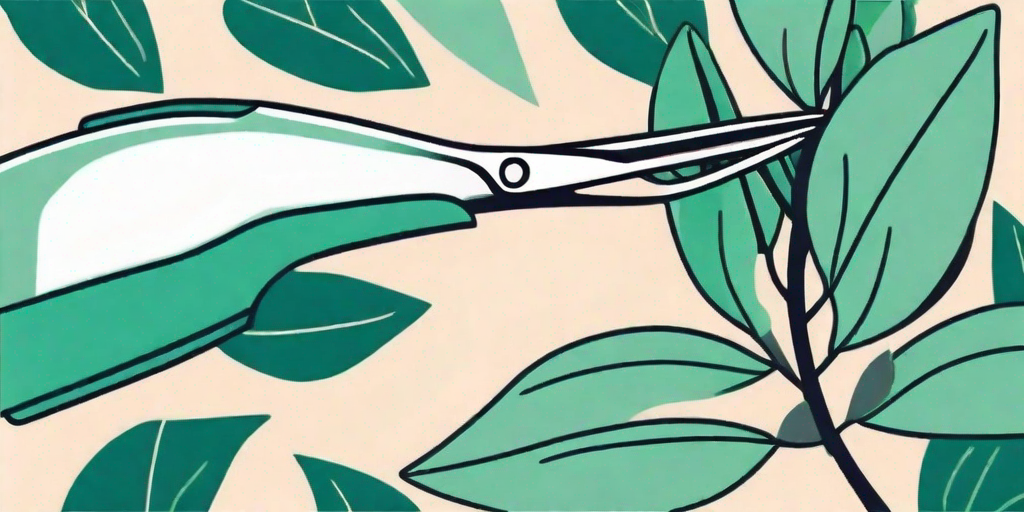
Ah, the rubber plant! The Ficus elastica, a plant that's as flexible in its care as its name suggests. It's a popular houseplant, and for good reason. It's hardy, it's attractive, and it's got a bit of a cheeky personality. But like all living things, it needs a bit of TLC to truly thrive. And that's where pruning comes in. Don't worry, it's not as scary as it sounds. In fact, it's a bit like giving your plant a haircut, and who doesn't love a good trim?
Why Prune Your Rubber Plant?
First things first, why should you even bother pruning your rubber plant? Well, there are a few reasons. Pruning helps to control the size and shape of your plant, which is especially important if your rubber plant is starting to resemble a jungle more than a houseplant. It also encourages new growth and can help to keep your plant healthy by removing any dead or diseased leaves.
And let's not forget about aesthetics. A well-pruned rubber plant is a sight to behold, with its glossy leaves and robust shape. It's like the supermodel of the plant world, turning heads and making your other plants green with envy.
When to Prune Your Rubber Plant
Timing is everything, and that's especially true when it comes to pruning your rubber plant. The best time to prune is in the early spring, just before the plant's growth period. This gives your plant plenty of time to recover and start sprouting new growth.
However, if your rubber plant is looking a bit unruly or if you notice any dead or diseased leaves, don't be afraid to give it a quick trim. Just remember, less is more when it comes to pruning. You can always cut more, but you can't uncut what's been cut.
How to Prune Your Rubber Plant
Step 1: Gather Your Tools
Before you start hacking away at your plant, you'll need a few tools. A sharp pair of pruning shears is a must. You'll also need a clean cloth and some rubbing alcohol to clean your shears before and after pruning. This helps to prevent the spread of disease.
And don't forget about protection for yourself. Rubber plants can produce a milky sap when cut, which can irritate the skin. So, it's a good idea to wear gloves and long sleeves when pruning your plant.
Step 2: Identify What Needs to Be Pruned
Now that you're armed and ready, it's time to identify what needs to be pruned. Look for any dead, yellowing, or diseased leaves. These should be your first targets. You should also look for any branches that are growing out of shape or ruining the symmetry of your plant.
Remember, pruning is not just about removing the bad, it's also about encouraging the good. So, don't be afraid to cut back some healthy branches if it will improve the overall shape and health of your plant.
Step 3: Make Your Cuts
Now comes the fun part, making your cuts. When cutting, aim to make your cut just above a leaf node, which is where a leaf or branch connects to the main stem. This is where new growth will sprout.
Be sure to make your cuts at a 45-degree angle. This helps to prevent water from collecting on the cut surface, which can lead to rot. And remember, always cut back to a healthy part of the plant. If a branch is diseased, cut back to where the branch is healthy.
After Pruning Care
Once you've finished pruning, give your plant a good watering and return it to its usual spot. Keep an eye on your plant over the next few weeks, watching for new growth and any signs of distress.
Remember, pruning is a bit of a shock to the system for your plant. So, it's normal for your plant to take a bit of time to recover. But with a bit of patience and care, your rubber plant will be back to its glossy, robust self in no time.
Frequently Asked Questions
Can I propagate the cuttings from my rubber plant?
Absolutely! Rubber plants are great for propagation. Just make sure to let the cut end dry out for a day or two before planting it in soil. And remember, patience is key. It can take a few weeks for new roots to form.
What should I do if the sap from my rubber plant gets on my skin?
If the sap from your rubber plant gets on your skin, wash the area immediately with soap and water. If irritation persists, seek medical advice.
How often should I prune my rubber plant?
As a general rule, you should prune your rubber plant once a year in early spring. However, if your plant is looking a bit unruly or if you notice any dead or diseased leaves, feel free to give it a quick trim.
Conclusion
And there you have it, everything you need to know about pruning your rubber plant. Remember, pruning is not just about maintaining the size and shape of your plant, it's also about promoting health and new growth. So, don't be afraid to give your rubber plant a little trim. It might just thank you with a burst of new, glossy leaves.
Happy pruning!















